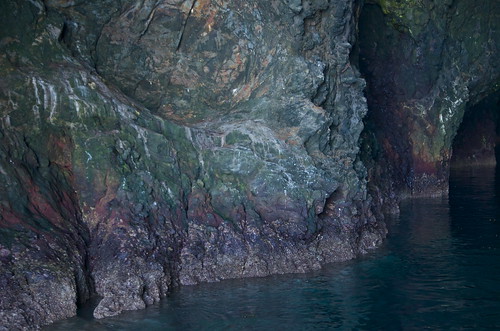The Painted Cave was one of V. M. Straka books mentioned in the footnotes and the sidelines. “One of Straka’s most successful and well-regarded books” (167), it was Straka’s fourth novel, published in 1919. The novel marked a transition in Straka’s writing, as he became “much more methodical and meticulous” (167), focusing heavily on every detail of his works.
The Painted Cave displays a solid understanding of archaeology, implying that Straka either studied the subject himself (or herself), or recieved help from someone who did. The novel is first mentioned on page ix as FXC goes over possible identities for Straka where Eric writes in the margins that Amarante Durand,
“The French arcaheologist-suffragist-novelist,” (ix)
must supply some of the details for the Straka novel.
Durand, unlike Straka, was an archaeologist, implying that she would have the deeper understanding of the cave portrayed in The Painted Cave. That claim is later questioned, however, when FXC mentions in a footnote that “none of the details of the titular cave are unique to ‘her’ caves in the Dordogne” (179). While it may originally appear noteworthy that Durand’s cave’s are a real set of caves, they are simply in the France and thus fit her character.
Chapter Five, Down and Out, draws on the themes and descriptions of The Painted Cave. Additionally, the petroglyphs in The Territory appear in The Painted Cave, albeit subtly changed.
https://www.flickr.com/photos/danayeager/5347174073/in/photolist-99vEyr-nwkF4T-fyYTkv-EKXyP-bjdeZg-a41TCz-dtBUhg-mH7gXY-3X55zG-9TWsMW-fweTz6-dzG1j-aHi4FK-rBnMZM-kmw6xV-4yEtm6-fL6kLP-xgr4XE-xvPnS-spsrAf-nHxRov-p3uzkr-as3Nee-qmx44D-oDXFML-rEZbMS-vwRLG6-7W4k3J-iejzZ7-p2bThV-bJX6kt-7DhCZ8-84ZUkJ-kTqUdp-6Csnmy-8GbCY6-avXUDt-n5HJ9E-3k6hU4-m9GFZ-fBytw5-851UMN-dLtFFk-w5LGZ8-9AK3nE-gdsxjW-gdpj6h-4sMkKT-qZgBgj-h6Cs7K
Interestingly, it is a footnote about The Painted Cave that most convinces Eric that FXC lied. On page 167, FXC details a conversation she had with Straka about the shift in his writing style as he wrote The Painted Cave. Eric responds by writing “A lie. There’s no such letter-FXC didn’t start working w/ VMS until years later,” (167) though Eric acknowledges that there is no clear reason for FXC to lie. Jen later comes back and questions his assertion-“Care to revise that opinion?” (167), implying that she may have found the code.
Little information about the actual content of The Painted Cave is included, other than the fact that it takes place in what is likely a cave in South France, and that there are petroglyphs on several of the walls. However, through research we can find that this cave refers to Lascaux.
Stylistically, it is similar to Ship of Theseus in that the writing is meticulous and carefully thought out.
Back to Works By


